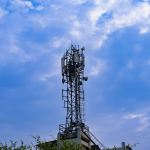NEWS
President Joe Biden and Vice President Kamala Harris have announced how the $42.5 billion Broadband Equity, Access and Deployment (BEAD) funds will be divided among U.S. states and territories
President Biden, Vice President Harris and Secretary of Commerce Gina Raimondo announced the allocations at the White House on Monday June 26. “What this announcement means for people across the country is that if you don’t have access to quality, affordable high-speed Internet service now – you will, thanks to President Biden and his commitment to investing in America,” Raimondo said. Mitch Landrieu, Senior Advisor to the President and White House Infrastructure Coordinator said, “simply put, high-speed Internet is a necessity in today’s society” and emphasized that the Biden-Harris administration is “committed to leaving no community behind”.
Drawing comparisons to President Franklin Roosevelt’s 1936 Rural Electrification Act, the Biden administration acknowledged that the goal of providing high-speed internet to all Americans is “bold” but by no means impossible. The BEAD program is part of President Biden’s sweeping Infrastructure Investment and Jobs Act (IIJA) and aims to close the digital divide.
The money allocated to each state was determined by the Federal Communications Commission’s (FCC) national broadband availability maps. An initial version of the map was published in November and was followed by a challenge process. States, internet service providers, and other parties were able to officially challenge the accuracy of the FCC’s data. The second version of the map was released May 30 and the NTIA used this to determine how to divide BEAD funds.
A senior administration official reported that the maps show that 8.5 million locations in the U.S. and its territories – about 7% of the country – do not have access to high-speed internet. Once states receive formal notice of their allocation on June 30, they will have six months to submit initial proposals for how they will spend the funds.
State governments will coordinate with county and local governments to formulate spending plans and correct any additional errors in availability data. After the NTIA approves states’ initial plans, state authorities can access 20% of their allocated funds. The remaining 80% will be available after states submit their final plans in spring 2025.
Tyler Cooper, editor-in-chief of BroadbandNow, said that “there weren’t any shockers” in terms of allocation amounts. Texas won the largest allocation at $3.31 billion – unsurprising given the vast scale of the state and the number of rural areas outside of the main urban hubs. California is set to receive $1.86 billion, closely followed by Missouri ($1.74 billion), Michigan ($1.56 billion), and North Carolina ($1.53 billion). All 50 states, along with Washington D.C. and Puerto Rico, will receive at least $100 million.
President Biden also stressed that the BEAD program will create new jobs for Americans as there are requirements for construction materials to be American-made. While the Build America, Buy America Act, part of IIJA, aims to stimulate the U.S. economy and create jobs, there are concerns that the requirement could delay broadband deployment efforts. Paul Atkinson, CEO of Optical Network Business at STL wrote on Telecoms.com that, as admirable as the intentions are behind Build America, Buy America, putting limitations on the production and supply of equipment will slow the rollout of American broadband networks, especially in the case of fiber optic networks.
You can hear more about investment in US broadband at next year’s Connected America which is being held in Dallas on March 12 & 13 2024 – secure your place here!

















